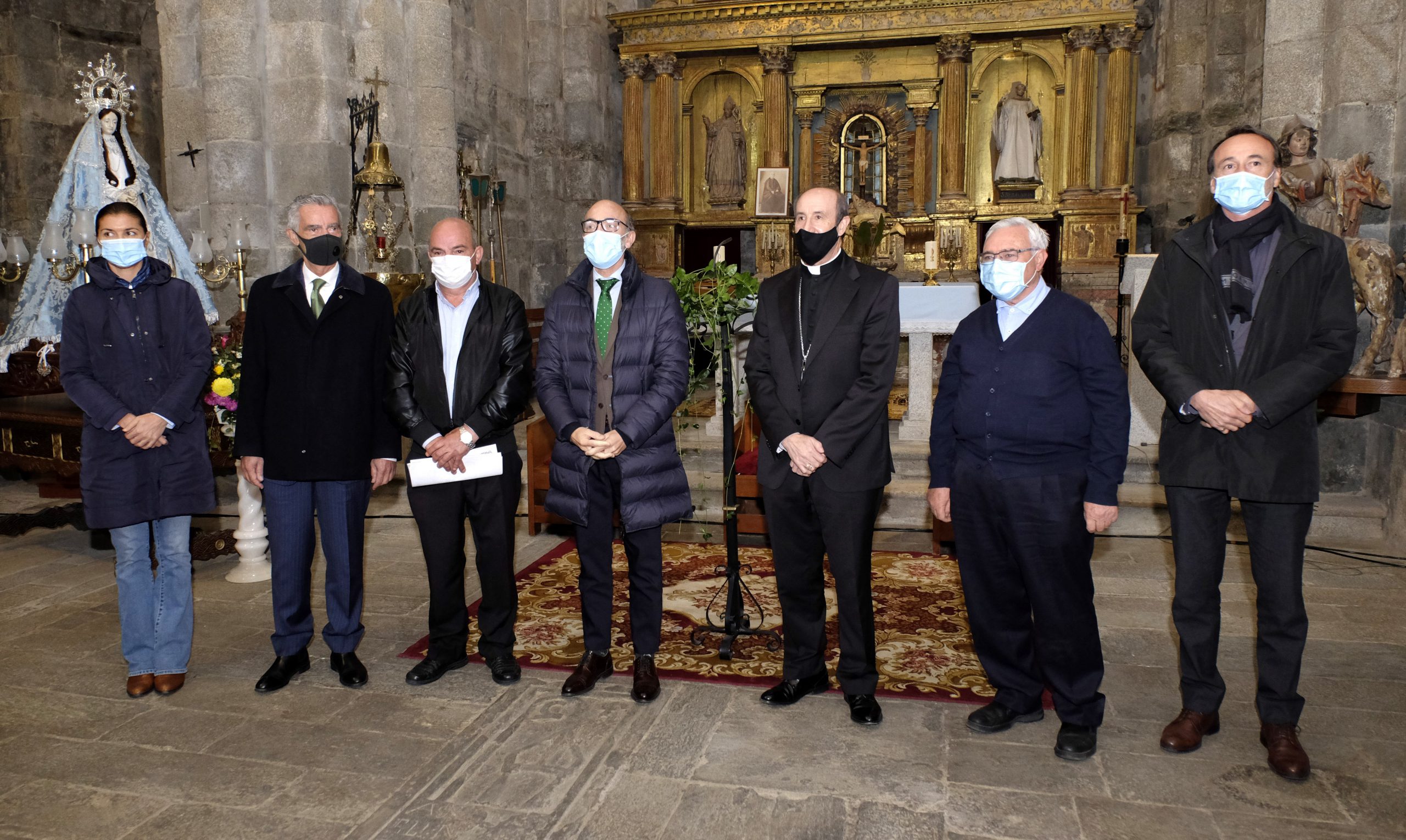Junta and Fundación Iberdrola España visit the improvement works carried out in San Martín de Castañeda, as part of the Atlantic Romanesque Plan
The Regional Minister of Culture and Tourism of the Regional Government of Castile and León, Javier Ortega, and the President of the Iberdrola España Foundation, Fernando García, have paid an institutional visit to the monastery of San Martín de Castañeda in Zamora to check in situ the improvements made to the temple as part of the Atlantic Romanesque Plan and to see what a boost the launch of the information point in June last year has meant for the town.
The Regional Minister of Culture and Tourism of the Regional Government of Castile and León, Javier Ortega, and the President of the Iberdrola Spain Foundation, Fernando García, have made an institutional visit to the monastery of San Martín de Castañeda to check in situ the improvements carried out within the framework of the Atlantic Romanesque Plan, which is being developed jointly by the two entities.
During the visit, they were accompanied, among others, by the bishop of the Diocese of Astorga, Jesús Fernández, the mayor of Galende, José Manuel Prieto, and the architect of the Santa María la Real Foundation, Jesús Castillo.
The work carried out in the church in Zamora has focused on the renovation of the roof of the nave, with a double ventilation system that allows the temperature to be regulated and minimises the humidity problems that the building was suffering from. To carry out this work, which has lasted eight months, an investment of around 400,000 euros has been made.
New technologies at the service of heritage
This work carried out in the church of San Martín de Castañeda highlights the importance of new technologies in heritage conservation, as it is one of the churches included in the heritage monitoring system (MHS), developed by the Santa María la Real Foundation.
The data provided by the sensors distributed throughout the building have made it possible to control and know its condition in order to be able to plan the different interventions carried out to date with greater accuracy. Thanks to this information, for example, it was decided to refurbish the old sacristy as a chapel or to renovate the roofs of the church, work that was visited this morning.
Románico Atlántico information point
The visit has also served to check the revulsive that has meant for Galende -municipality to which the temple belongs- the implementation of the information point of Románico Atlántico, enabled in June last year in the old house of the park, a space annexed to the temple.
This action has not only served to recover and enhance one of the few places of medieval origin that the monastery preserves, but has also provided it with a visitor reception centre, where the history of the building can be explained and where the different actions carried out within the Atlantic Romanesque Plan can be explained.
Atlantic Romanesque: a cross-border cooperation initiative
The Atlantic Romanesque Plan is a cross-border cooperation initiative for the conservation of cultural heritage, which includes projects for the restoration and enhancement of some twenty Romanesque temples located in the Spanish provinces of Zamora and Salamanca and in the Portuguese regions of Porto, Vila-Real and Bragança.
The Plan is an example of institutional cooperation and public-private participation, as it is promoted by the Junta de Castilla y León, the Iberdrola Spain Foundation and the Portuguese Ministry of Culture. The actions in Spain have been entrusted to the Santa María la Real Foundation and are carried out in collaboration with the dioceses of each territory.


